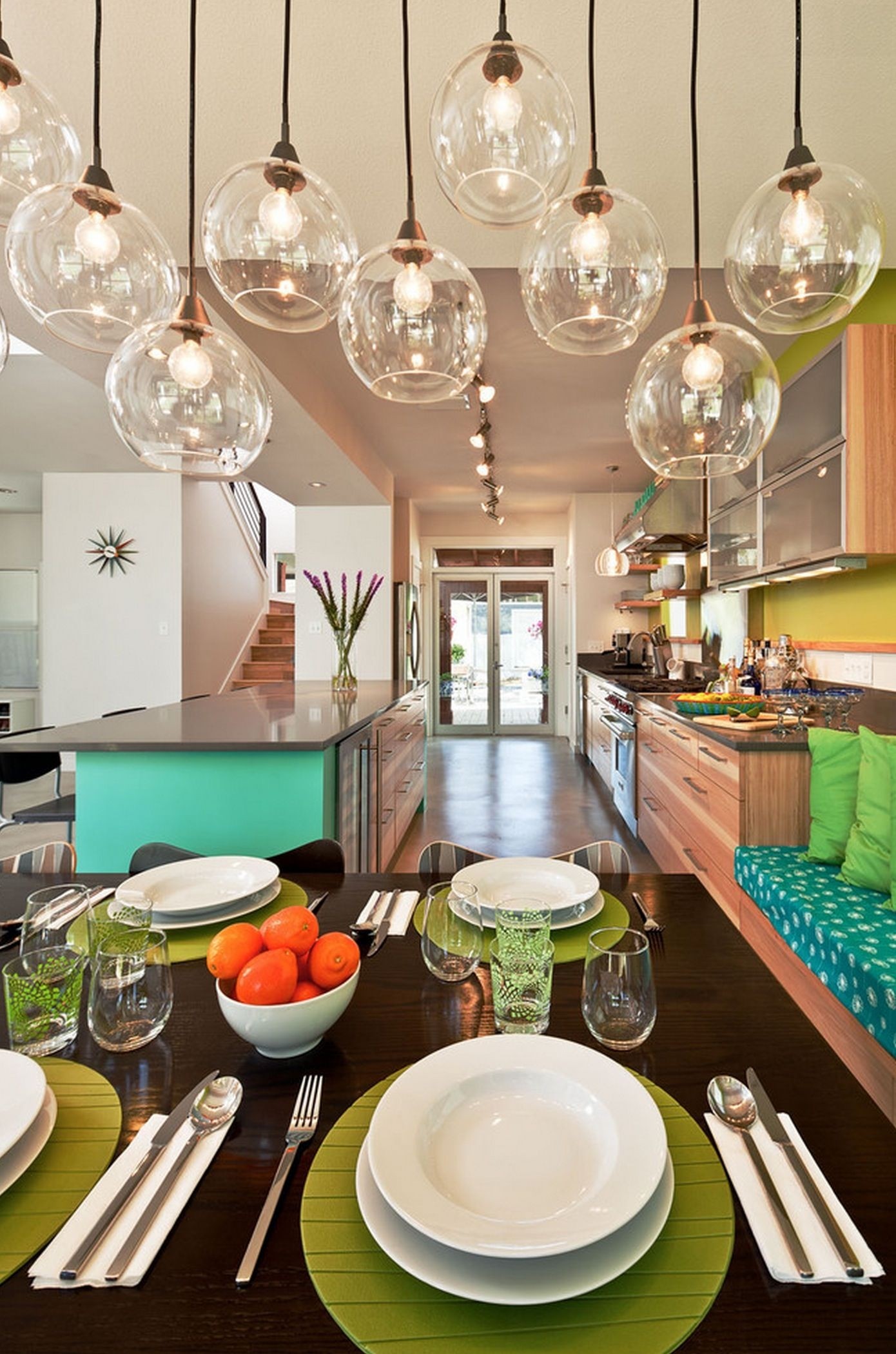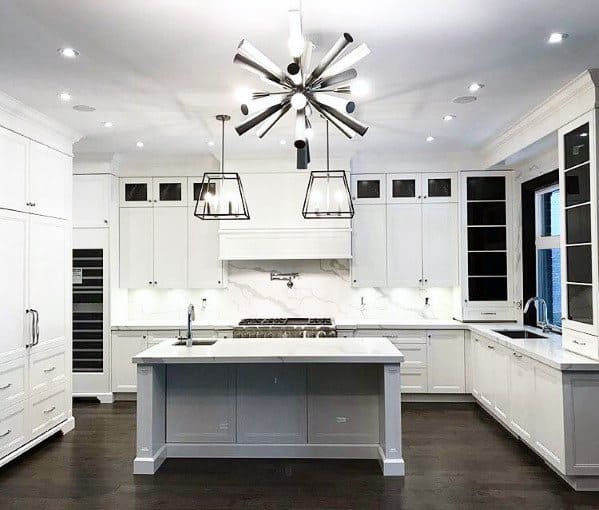Pendant lights over a kitchen island can be a game-changer in your kitchen design, offering not just functional illumination but also a stylish focal point. When planning to install pendant lights over a kitchen island, it’s essential to consider several factors to ensure the lighting complements your space. The first thing I think about is the scale and proportion of the lights relative to the island. You don’t want the lights to be too small that they look lost, nor too large that they overwhelm the space. Finding the right balance can enhance both the aesthetics and functionality of your kitchen.
Another critical aspect is the height at which the pendant lights are hung. In my experience, the standard recommendation is to hang them about 30 to 36 inches above the countertop. This height allows for ample light spread while maintaining clear sightlines across the kitchen. It’s a good rule of thumb, but depending on the height of the ceiling and the style of the pendant, adjustments might be necessary. If the ceiling is particularly high, you might need to hang the lights a bit lower, and vice versa.

The number of pendant lights to install over the kitchen island is another consideration. I find that this often depends on the length of the island. For shorter islands, one or two pendant lights are usually sufficient. However, for longer islands, three or more lights can create a more balanced and visually appealing look. It’s also crucial to space them evenly to avoid clutter and ensure an even distribution of light. Some designers prefer odd numbers, like three or five, as they tend to create a more dynamic visual flow.
The style and design of the pendant lights can significantly impact the overall aesthetic of the kitchen. Pendant lights come in various styles, from sleek and modern to rustic and industrial. When choosing a style, I always consider the existing kitchen decor and the atmosphere I want to create. For instance, glass pendants can add a touch of elegance and are great for creating a light and airy feel, while metal or matte black pendants offer a more industrial or contemporary vibe. The pendants must complement the other elements in the kitchen, such as the cabinetry, countertops, and backsplash.

I also consider the type of light bulb and the color temperature of the light. LED bulbs are a popular choice for pendant lights due to their energy efficiency and longevity. However, the color temperature can affect the ambiance of the kitchen. Warm white lights create a cozy and inviting atmosphere, while cool white lights are better for a clean and modern look. In kitchens, I usually prefer warm white lights as they tend to make the space feel more welcoming, but this can vary depending on personal preference and the kitchen’s overall design.
The material and finish of the pendant lights are important as well. Materials like glass, metal, and wood each bring a different texture and feel to the space. Glass pendants are versatile and can fit into a variety of design styles, while metal pendants often have a more contemporary or industrial look. Wood pendants can add warmth and are great for rustic or farmhouse-style kitchens. The finish of the pendants, whether it’s brushed nickel, matte black, or antique brass, should also complement the other finishes in the kitchen for a cohesive look.

One aspect that often gets overlooked is the type of light fixture used in the pendants. I pay attention to whether the lights are downlights, uplights, or a combination. Downlights focus light directly onto the island, which is ideal for task lighting. Uplights, on the other hand, reflect light off the ceiling and create a softer, more ambient glow. A combination of both can provide a nice balance, offering sufficient task lighting while also contributing to the overall ambiance of the kitchen.
In addition to functionality, I consider the pendant lights’ role as a design statement. A well-chosen pendant light can serve as a piece of art in the kitchen, drawing attention and adding personality to the space. Unique designs, interesting shapes, or even colorful pendants can make a bold statement. It’s essential, though, that these statement pieces still serve their functional purpose, providing adequate light for the tasks that take place on the kitchen island.
The installation of pendant lights is another crucial step that requires careful planning. I always recommend consulting with a professional electrician to ensure the lights are installed safely and correctly. This is especially important if the installation involves new wiring or if the lights need to be centered over the island. Proper installation not only ensures the lights function as intended but also helps prevent issues down the line, such as flickering or uneven lighting.

When considering the overall lighting plan for the kitchen, pendant lights over the island should be integrated with other lighting sources. I often combine them with under-cabinet lighting, recessed lighting, or a chandelier to create layers of light. This layered lighting approach ensures that the kitchen is well-lit for all activities, from cooking to dining, while also enhancing the room’s ambiance. The pendant lights then serve as both task lighting and decorative accents, tying the whole lighting scheme together.
I also think about the flexibility of the lighting. Dimmers are a great addition to pendant lights over a kitchen island, allowing you to adjust the brightness depending on the time of day or the mood you want to create. During meal prep, brighter lighting might be necessary, while dimmer lighting can create a more relaxed atmosphere during dining or entertaining. This flexibility adds to the functionality and comfort of the space.
The size and shape of the kitchen island itself can also influence the choice of pendant lights. A large, rectangular island might benefit from elongated pendant lights that match the shape, while a smaller, square island might be better suited to a single, centrally placed pendant. I always take the island’s dimensions into account to ensure that the pendants enhance rather than detract from the overall design.

It’s also worth considering the type of activities that take place on the island. If the island is primarily used for food prep, brighter, more focused lighting might be needed. However, if it serves as a gathering place for family and friends, softer, ambient lighting could be more appropriate. The pendant lights should cater to the island’s primary function while also adding to the kitchen’s overall ambiance.
Another factor I consider is the maintenance of the pendant lights. Certain materials and finishes might require more upkeep than others. For example, glass pendants can show dust and fingerprints more easily, requiring regular cleaning to keep them looking their best. Metal pendants, depending on the finish, might also need occasional polishing to maintain their appearance. When choosing pendant lights, I always weigh the aesthetic appeal against the practicality of maintaining them in a busy kitchen environment.
Finally, I think about the pendant lights’ impact on the kitchen’s overall energy efficiency. With the growing emphasis on sustainable living, choosing energy-efficient lighting options is more important than ever. LED pendant lights are not only energy-efficient but also produce less heat, which can help keep the kitchen cooler, especially during cooking. This choice aligns with a broader goal of creating an environmentally friendly and cost-effective home.

Common Mistakes to Avoid
One common mistake is choosing pendant lights that are too small or too large for the kitchen island. Scale is crucial, and selecting the wrong size can disrupt the balance of the kitchen design.
Another mistake is hanging the pendants too high or too low. The height needs to be just right to ensure the lights are functional without obstructing views or causing glare.
Additionally, neglecting the overall kitchen lighting plan can lead to a poorly lit space. Pendant lights should be part of a layered lighting scheme, not the sole source of light.
Choosing style over function is another pitfall. While it’s tempting to pick the most stylish pendants, it’s essential to ensure they provide adequate lighting for the tasks at hand.
Finally, improper installation is a mistake that can lead to safety issues and functionality problems. Always consult a professional to ensure the lights are installed correctly.

How many pendant lights should I install over my kitchen island?
The number of pendant lights you should install depends on the size of your kitchen island and the design you prefer. For smaller islands, one or two pendants are usually sufficient. Larger islands might benefit from three or more pendants for balanced lighting. It’s also common to space them evenly across the length of the island, ensuring that the light is distributed evenly.
What is the ideal height to hang pendant lights over a kitchen island?
The ideal height to hang pendant lights is typically 30 to 36 inches above the countertop. This height provides ample lighting while keeping the pendants out of your line of sight, ensuring they don’t obstruct views across the kitchen. However, adjustments may be needed based on ceiling height and personal preference.
What type of light bulb should I use for pendant lights over a kitchen island?
LED bulbs are a popular choice due to their energy efficiency and longevity. The color temperature of the bulb is also important. Warm white bulbs create a cozy, inviting atmosphere, while cool white bulbs offer a more modern and clean look. It’s important to choose a bulb that complements the overall ambiance you want in your kitchen.


Rattan & Wicker Pendant Lights
Hanging Your Pendant Light Fixture to a Proper Height How To Build A House

3-Light Kitchen Island Pendant Kitchen island lighting

Related Posts:
- Kitchen Task Lighting Options
- John Lewis Kitchen Pendant Lights
- Xenon Kitchen Under Cabinet Lighting
- 4 Foot Led Kitchen Light
- Recessed Lighting Above Kitchen Sink
- Dark Kitchen Lighting Solutions
- Kitchen Dining Room Lighting Sets
- Color Temperature Kitchen Lighting
- How To Install Recessed Lighting In Kitchen
- Rope Lights Above Cabinets In Kitchen
